 According to the law of comparative advantage, trade can benefit all countries if they export goods which they can produce at lower opportunity costs than their trading partners. Trade enables all countries to consume beyond their production possibility frontier. What is more, trade can increase competition, which encourages firms to be more efficient.
According to the law of comparative advantage, trade can benefit all countries if they export goods which they can produce at lower opportunity costs than their trading partners. Trade enables all countries to consume beyond their production possibility frontier. What is more, trade can increase competition, which encourages firms to be more efficient.
That trade is beneficial has been generally accepted by governments around the world since the Second World War, with the General Agreement on Tariffs and Trade (GATT) and then the World Trade Organization (WTO) advocating the dismantling of trade barriers. Countries have participated in a series of trade ’rounds’, such as the Uruguay Round (1986–94) and most recently the Doha Round (2001–15). But since the financial crisis of 2008, there has been waning enthusiasm for freer trade and growing calls to protect strategic and/or vulnerable industries. To some extent this mirrors the growth in protection after the Great Depression of the early 1930s as countries sought to boost their own industries.
After some progress in the Doha round talks in Nairobi in December 2015, the talks effectively marked the end of a fourteen-year road for the round (see also). There was a failure to agree on a number of items and chances of resurrecting the talks seem slim.
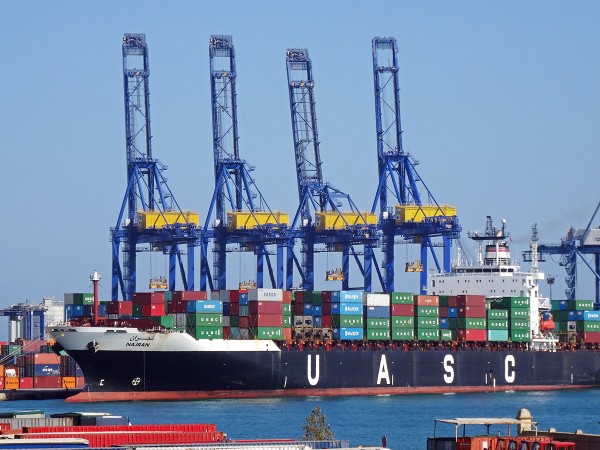 The classic response to calls for protection is that it can lead to a trade war, with a net loss in global output as less efficient domestic industries are shielded from competition from lower-cost imports. Consumers lose from no longer having access to cheaper imported goods. Trade wars, it is argued, are a negative sum game. Any gains to one country are more than offset by losses elsewhere. In fact, it is likely that all countries will lose.
The classic response to calls for protection is that it can lead to a trade war, with a net loss in global output as less efficient domestic industries are shielded from competition from lower-cost imports. Consumers lose from no longer having access to cheaper imported goods. Trade wars, it is argued, are a negative sum game. Any gains to one country are more than offset by losses elsewhere. In fact, it is likely that all countries will lose.
One argument for protection recognises the efficiency gains from free trade, but argues that current trade is distorted. For example, countries may subsidise the export of products in which they have a comparative disadvantage and dump them on the rest of the world. The WTO recognises this as a legitimate argument for tariffs, if they are used to offset the effect of the subsidies and make import prices more reflective of the cost of production.
But increasingly arguments go beyond this. Industries that are regarded as strategic to a country’s future, such as the steel industry or agriculture, are seen as warranting protection. With protection, investment may flow to such industries, making them more efficient and even gaining a comparative advantage at some point in the future.
Then there is the question of income distribution. Trade with poor countries may help to close the gap somewhat between rich and poor countries. The reason is that poor countries, with an abundance of labour, are likely to have a comparative advantage in labour-intensive products. The demand for exports of such products will help to drive up wages in such countries. However, income distribution within the rich countries may become less equal. Cheap imports from developing countries may depress the wages of unskilled or low-skilled workers in the rich countries.
Another argument concerns the devastation caused to communities by the closure of plants which are major employers. Workers made redundant may find it hard to find alternative employment, especially if their skills are specific to the plant that has closed. At least in the short term, it is argued that such industries warrant protection to allow time for alternative employers to be attracted into the area.
Arguments such as these are being used today in many countries as they struggle with slowing growth in China, a glut of global resources and overcapacity in certain industries.
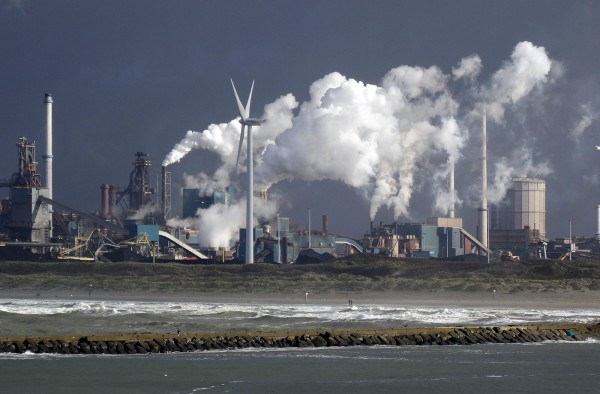 The steel industry is a case in point. The announcement by Tata Steel that it intends to close the Port Talbot steel works has been met with consternation and calls for protection against subsidised Chinese steel imports. The USA already imposes tariffs of 256% on corrosion-resistant Chinese steel. The EU has proposed raising tariffs on Chinese steel to the full amount of the subsidy, but the UK has blocked this, not wishing to trigger a trade war with China. In the meantime, China has announced the imposition of a tariff of 46% on a particular type of hi-tech steel imported from the EU.
The steel industry is a case in point. The announcement by Tata Steel that it intends to close the Port Talbot steel works has been met with consternation and calls for protection against subsidised Chinese steel imports. The USA already imposes tariffs of 256% on corrosion-resistant Chinese steel. The EU has proposed raising tariffs on Chinese steel to the full amount of the subsidy, but the UK has blocked this, not wishing to trigger a trade war with China. In the meantime, China has announced the imposition of a tariff of 46% on a particular type of hi-tech steel imported from the EU.
On the other side of the Atlantic, there have been growing protectionist calls from presidential front runners. Donald Trump and Ted Cruz on the Republican side, and Bernie Sanders and now Hilary Clinton on the Democratic side, are opposed to the trade agreement that President Obama has been seeking with the EU – the Transatlantic Trade and Investment Partnership (TTIP). Donald Trump has proposed imposing tariffs of 45% on all Chinese imports.

The following articles look at the growing calls for protection, especially against China, and at the arguments about what should be done to protect the UK and EU steel industry.
Articles
Defiant China slaps steel tariffs on Britain as trade war looms The Telegraph, Ambrose Evans-Pritchard (1/4/16)
China’s soaring steel exports may presage a trade war, The Economist (9/12/15)
Trade, at what price? The Economist (30/3/16)
Free trade in America: Open argument The Economist (2/4/16)
Can the British steel industry be saved? Financial Times (2/4/16)
Steel crisis: UK government plays down China tariff fears BBC News (2/4/16)
The dogmas destroying UK steel also inhibit future economic growth The Observer, WIll Hutton (3/4/16)
UK accused of leading efforts to block limits to Chinese steel dumping The Guardian, Frances Perraudin (1/4/16)
There’s always an excuse to justify suspending free trade – Tata is the latest The Telegraph, Allister Heath (1/4/16)
Can one of the world’s top economies live without making steel? Bloomberg, Thomas Biesheuvel (1/4/16)
Trade policy is no longer just for political nerds: it matters in the UK and US The Guardian, Larry Elliott (27/3/16)
Steel shrivels while Britain’s balance of payments crisis grows The Observer, WIlliam Keegan (3/4/16)
Trump’s tariff plan could boomerang, spark trade wars with China, Mexico Reuters, David Lawder and Roberta Rampton (24/3/16)
Analysis: A Trump trade war could cost the U.S. millions of jobs Daily Herald (Chicago), Jim Tankersley (3/4/16)
Questions
- What is meant by the ‘law of comparative advantage’? Does the law imply that countries will always gain from totally free trade?
- Demonstrate the gains for each of two countries which choose to trade with each other (see, for example, pages 711–3 in Economics, 9th edition).
- What is meant by ‘strategic trade theory’? How would such theory relate to the case of steel production in south Wales?
- What are the arguments for and against the EU imposing tariffs on Chinese steel imports equal to the subsidy given by the Chinese government?
- Is protectionism always a negative sum game? Explain.
- Assess the validity of various arguments for protection.
- Why did it prove impossible to complete the Doha round?
- What is meant by the ‘Transatlantic Trade and Investment Partnership (TTIP)’? Why is there so much opposition to it?
- Are bilateral trade deals, such as the TTIP, the best way of moving forward in reaping the gains from freer trade?
 Governments of twelve Pacific rim nations, including the USA, Canada, Japan and Australia have just agreed to a trade deal – the Trans-Pacific Partnership (TPP). This represents the most significant trade deal since the completion of the Uruguay Round and the creation of the World Trade Organisation in 1994. Together these countries account for some 40% of global GDP. The deal must still be signed by the leaders of the TPP countries, however, and, more importantly, ratified by their legislatures, where, to put it mildly, agreement is not universal.
Governments of twelve Pacific rim nations, including the USA, Canada, Japan and Australia have just agreed to a trade deal – the Trans-Pacific Partnership (TPP). This represents the most significant trade deal since the completion of the Uruguay Round and the creation of the World Trade Organisation in 1994. Together these countries account for some 40% of global GDP. The deal must still be signed by the leaders of the TPP countries, however, and, more importantly, ratified by their legislatures, where, to put it mildly, agreement is not universal.
The deal is hailed as a move towards freer trade in a number of areas, including agriculture and services. But it also provides greater protection for owners of intellectual property. Proponents of the deal argue that it will to lead large-scale reductions in tariffs and other trade restrictions. As the Economist article states:
For American exporters alone, 18,000 individual tariffs will be reduced to zero. Much the same will be true for firms in the other 11 members. Even agricultural barriers, usually among the most heavily defended, will start to come down. Foreigners will gain a toehold in Canada’s dairy sector and a bigger share of Japan’s beef market, for example.
But despite this being the biggest trade deal for some 20 years, it has been highly criticised by various groups. Freer trade threatens industries that will face competition from other countries in the TPP. This unites both corporations and unions in trying to protect their own specific interests. However, the agreement gives ground to many special industries by retaining protection in a number of areas, at least for several years.
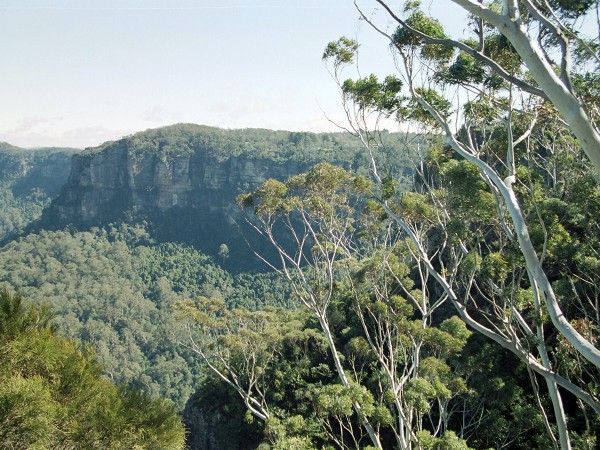 It has also been criticised by environmentalists who worry about the removal of various environmental safeguards. In answer to these concerns, there are several provisions in the agreement that provide some measure of environmental protection so as to slow things such as deforestation, overfishing and carbon emissions. But environmentalists argue that these provisions do not go far enough.
It has also been criticised by environmentalists who worry about the removal of various environmental safeguards. In answer to these concerns, there are several provisions in the agreement that provide some measure of environmental protection so as to slow things such as deforestation, overfishing and carbon emissions. But environmentalists argue that these provisions do not go far enough.
Others are concerned that the agreement will allow corporations to challenge governments and undermine the ability of governments to regulate them.
The articles look at some of the details of the agreement and at the arguments for and against ratifying it. Some of these arguments go to the heart of the age-old free trade versus protection debate.
US, Japan and 10 countries strike Pacific trade deal Financial Times, Shawn Donnan and Demetri Sevastopulo (5/10/15)
What Trade-Deal Critics Are Missing Wall Street Journal, Zachary Karabell (8/10/15)
The Trans-Pacific Partnership: Weighing anchor The Economist (10/10/15)
A trade deal is no excuse to milk taxpayers Globe and Mail (Canada), Yuen Pau Woo (7/10/15)
What Is the Trans-Pacific Partnership Agreement (TPP)? Electronic Frontier Foundation
Wikileaks release of TPP deal text stokes ‘freedom of expression’ fears The Guardian, Sam Thielman (9/10/15)
TPP’s clauses that let Australia be sued are weapons of legal destruction, says lawyer The Guardian, Jess Hill (10/11/15)
Questions
- Who are likely to benefit from the TPP?
- Why are American republicans generally opposed to the agreement?
- What are the objections to the TPP’s provisions for the protection of intellectual property rights?
- Would the current twelve members of the TPP gain if China joined?
- What are the objections of environmentalists to TPP?
- What effect will the TPP on European countries?
- Other than a reduction in tariffs, what other types of measures are included in the TPP?
- What is the Investor-State Dispute Settlement mechanism and what criticisms have been made of it? Are they justified?
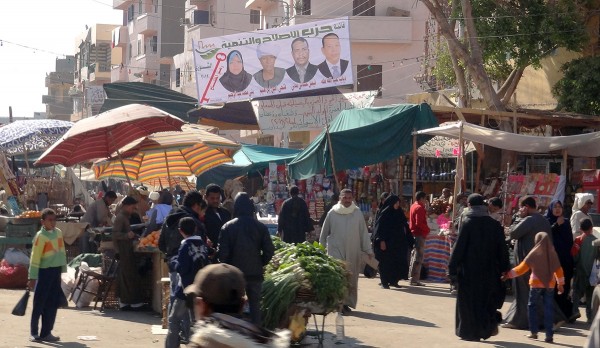 A deal has just been signed between 26 African nations to form a new free trade area, the Tripartite Free Trade Area (TFTA). The countries have a population of 625 million (56% of Africa’s total) and a GDP of $1.6 trillion (63% of Africa’s total). The deal effectively combines three existing free trade areas: the Common Market for Eastern and Southern Africa, the Southern African Development Community and the East African Community.
A deal has just been signed between 26 African nations to form a new free trade area, the Tripartite Free Trade Area (TFTA). The countries have a population of 625 million (56% of Africa’s total) and a GDP of $1.6 trillion (63% of Africa’s total). The deal effectively combines three existing free trade areas: the Common Market for Eastern and Southern Africa, the Southern African Development Community and the East African Community.
Although the deal has been signed by the nations’ leaders, it still needs parliamentary approval from each of the countries. It is hoped that this will be achieved by 2017. If it is, it will mark a major step forward in encouraging intra-African trade.
The deal will involve the removal of trade barriers on most goods and lead to a reduction in overall tariffs by more than 50%. The expectation of the leaders is that this will generate $1 trillion worth of economic activity across the 26 countries through a process of trade creation, investment, increased competition and the encouragement of infrastructure development. 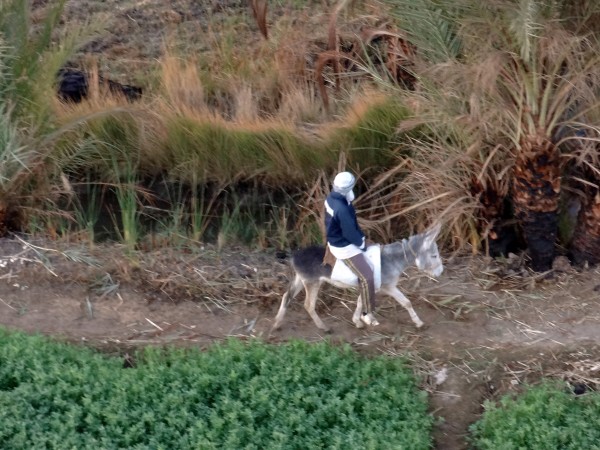 But given the current poor state of infrastructure and the lack of manufacturing capacity in many of the countries, the agreement will also encourage co-operation to promote co-ordinated industrial and infrastructure development.
But given the current poor state of infrastructure and the lack of manufacturing capacity in many of the countries, the agreement will also encourage co-operation to promote co-ordinated industrial and infrastructure development.
Up to now, the development of intra-African trade has been relatively slow because of poor road and rail networks and a high average protection rate – 8.7% on exports to other African countries compared with 2.5% on exports to non-African countries. As a result, intra-African trade currently accounts for just 12% of total African trade. It is hoped that the development of TFTA will result in this rising to over 30%.
Much of the gains will come from economies of scale. As Kenyan academic Calestous Juma says:
“By having larger markets, it signals the possibility of being able to manufacture products at a scale that is cost-effective. For example, where you need large-scale investments like $200m to create a pharmaceutical factory, you couldn’t do that if you were only selling the products in one country.”
The question is whether the agreement signed on the 10 June will lead to the member countries fully taking advantage of the opportunities for trade creation. Agreeing on a deal is one thing; having genuinely free trade and investing in infrastructure and new efficient industries is another.
Videos and audio
 African leaders ink trade deal Deutsche Welle (11/6/15)
African leaders ink trade deal Deutsche Welle (11/6/15)
 African leaders sign pact to create ‘Cape to Cairo’ free trade bloc euronews (10/6/15)
African leaders sign pact to create ‘Cape to Cairo’ free trade bloc euronews (10/6/15)
 Africa Free Trade Analysis BBC Africa, Calestous Juma (9/6/15)
Africa Free Trade Analysis BBC Africa, Calestous Juma (9/6/15)
Articles
African Leaders To Sign Free Trade Agreement To Create Common Market International Business Times, Aditya Tejas (10.6.15)
EAC, COMESA and SADC Blocs Ink ‘Historic’ Trade Deal allAfrica, James Karuhanga (11/6/15)
Tripartite Free Trade Area an Opportunity Not a Threat allAfrica, Sindiso Ngwenya (9/6/15)
Africa a step closer to free trade area Business Report (South Africa), Rob Davies (11/6/15)
The Cape to Cairo trade ‘super bloc’ is here; 15 surprising – and shocking – facts on trade within Africa Mail & Guardian (Kenya), Christine Mungai (8/6/15)
The tripartite free trade area agreement in Africa is bound to disappoint Quartz Africa, Hilary Matfess (10/6/15)
Africa creates TFTA – Cape to Cairo free-trade zone BBC News Africa (10/6/15)
Will the Cape to Cairo free-trade zone work? BBC News Africa, Lerato Mbele (10/6/15)
African free trade still some way off BBC News, Matthew Davies (10/6/15)
Zambia not to benefit from Africa’s TFTA Medafrica, Geraldine Boechat (10/6/15)
Questions
- Distinguish between a free trade area, a customs union and a common market.
- What does the law of comparative advantage imply about the gains from forming a free trade area?
- Distinguish between trade creation and trade diversion.
- Why is it likely that there will be considerable trade creation from TFTA? Would there be any trade diversion?
- Why are small countries with a relatively low level of economic development likely to experience more trade creation than larger, richer ones?
- What barriers might remain in trade between the TFTA countries?
- Why might smaller, less developed members of TFTA be worried about the removal of trade barriers?
- Why might concentrating on developing local capacity, rather than just lowering tariffs, be a more effective way of developing intra-African trade
- What ‘informal’ barriers to trade exist in many African countries?
- Why is it that ‘Ordinary Africans are most probably not holding their breath’ about the gains from TFTA?
The east African countries of Kenya, Tanzania, Uganda, Burundi and Rwanda have been operating with a common external tariff for some time. The East African Community (EAC), as it is known, came into force in 2000. Initially it had just three members, Kenya, Tanzania and Uganda; the other two countries joined in 2007. As the Community’s site says:
The EAC aims at widening and deepening co-operation among the Partner States in, among others, political, economic and social fields for their mutual benefit. To this extent the EAC countries established a Customs Union in 2005 and are working towards the establishment of a Common Market in 2010, subsequently a Monetary Union by 2012 and ultimately a Political Federation of the East African States.
This Common Market came into force on 1 July 2010, with free movement of labour being instituted between the five countries. The plan is also to do away with all internal barriers to trade, although it may take up to five years before this is completed.
The following articles and videos look at this significant opening up of trade in east Africa and at people’s reactions to it. Will all five countries gain equally? Or will some gain at the others’ expense?
Articles
East African Countries Form a Common Market New York Times, Josh Kron (1/7/10)
Dawn of an era for East Africans The Standard, John Oyuke (1/7/10)
5 East African countries create common market The Associated Press, Tom Maliti (1/7/10)
FACTBOX-East African common market begins Reuters (1/7/10)
Bold plan to have single EAC currency by 2012 Daily Nation, Lucas Barasa (1/7/10)
East Africa’s common market begins BBC News, Tim Bowler (30/6/10)
East Africa: Poor Road, Railway Network Holding Back Integration allAfrica.com, Zephania Ubwani (1/7/10)
Challenges for one East Africa Common Market The Sunday Citizen, James Shikwati (4/7/10)
Videos
 Common market barriers NTVKenya (on YouTube) (2/7/10)
Common market barriers NTVKenya (on YouTube) (2/7/10)
 The fruits of E.A.C. NTVKenya (on YouTube) (2/7/10)
The fruits of E.A.C. NTVKenya (on YouTube) (2/7/10)
The East African Community (EAC)
Official site
Wikipedia entry
Questions
- Distinguish between a free trade area, a customs union, a common market and a monetary union.
- How is it possible that all five countries will gain from the establishment of a common market?
- Distinguish between trade creation and trade diversion. Under what circumstances is the establishment of a common market more likely to lead to (a) trade creation; (b) trade diversion?
- Why do some people worry about the consequences of free movement of labour with the EAC? How would you answer their concerns?
- What factors would need to be taken into account in deciding whether or not the five countries would benefit from forming a monetary union?
Back in 1993, the EU imposed tariffs on bananas imported from countries which were not former colonies of EU countries. These former colonies are in Africa, the Caribbean and the Pacific (the ACP countries). This meant that the main countries bearing the tariffs were banana producing countries in Central and South America.
“In 1996, Ecuador, Guatemala, Honduras and Mexico, together with the US, formally complained to the World Trade Organization (WTO) about the tariffs. Since then the WTO has repeatedly ruled that the EU tariffs are unfair, but little has changed thanks to continued discussions and arguments between the major players.”
Over the years the disputes between the EU and the APC countries on one side and the Latin American countries and the USA on the other have become known as the ‘banana wars’ (see Web cases 24.5 and 24.6 in Economics 7e MyEconLab). The WTO has ruled against the EU on several occasions, but to little effect as appeals have been lodged and talks have continued. At last, however, agreement has been reached – and without the WTO. This should see EU tariffs on Latin American bananas cut from 176 euros per tonne now to 114 euros per tonne over a seven-year period.
So are the banana wars over? Will EU consumers gain? And what will be the effect on Latin American and ACP banana producers? The following articles examine these questions.
Ending the longest trade dispute in history: EU initials deal on bananas with Latin American countries EU Press Release (15/12/09)
The EU-Latin America Bananas Agreement – Questions and Answers EU Press Release (15/12/09)
Lamy hails accord ending long running banana dispute WTO Press Release (15/12/09)
EU ends ‘banana wars’ with Latin America EU Observer (15/12/09)
Bananas dispute at the World Trade Organisation Reuters Factbox (15/12/09)
Banana prices to fall after longest trade dispute in EU history settled Telegraph (16/12/09)
End of banana wars brings hope for Doha Financial Times, Joshua Chaffin (16/12/09)
 EU cuts import tariffs in a bid to end ‘banana wars’ (video) BBC News (16/12/09)
EU cuts import tariffs in a bid to end ‘banana wars’ (video) BBC News (16/12/09)
EU cuts import tariffs in a bid to end ‘banana wars’ BBC News (15/12/09)
Banana wars: the fruits of world trade BBC News, Nigel Cassidy (15/12/09)
EU, Latin America Proclaim End to “Banana War” Latin American Herald Tribune, Marta Hurtado (15/12/09)
Settlement should help Chiquita Business Courier of Cincinnati, Dan Monk (15/12/09)
Banana deal offers hope for global trade talks Sydney Morning Herald, Alexandra Troubnikoff (16/12/09)
Pact Ends Long Trade Fight Over Bananas New York Times, Stephen Castle (15/12/09)
Banana deal offers hope for global trade talks Sydney Morning Herald, Stephen Castle (15/12/09)
EU banana dispute ends in favor of Latin American exporters Deutsche Welle (15/12/09)
Questions
- Who has gained and who has lost from the tariffs imposed on non-ACP producers over the past 16 years?
- How might the agreement over bananas impact on the stalled Doha round talks?
- What is likely to happen to banana prices in the EU over the coming months? Use a diagram to illustrate your answer.
- Are the banana wars likely to be over now?
 According to the law of comparative advantage, trade can benefit all countries if they export goods which they can produce at lower opportunity costs than their trading partners. Trade enables all countries to consume beyond their production possibility frontier. What is more, trade can increase competition, which encourages firms to be more efficient.
According to the law of comparative advantage, trade can benefit all countries if they export goods which they can produce at lower opportunity costs than their trading partners. Trade enables all countries to consume beyond their production possibility frontier. What is more, trade can increase competition, which encourages firms to be more efficient. The classic response to calls for protection is that it can lead to a trade war, with a net loss in global output as less efficient domestic industries are shielded from competition from lower-cost imports. Consumers lose from no longer having access to cheaper imported goods. Trade wars, it is argued, are a negative sum game. Any gains to one country are more than offset by losses elsewhere. In fact, it is likely that all countries will lose.
The classic response to calls for protection is that it can lead to a trade war, with a net loss in global output as less efficient domestic industries are shielded from competition from lower-cost imports. Consumers lose from no longer having access to cheaper imported goods. Trade wars, it is argued, are a negative sum game. Any gains to one country are more than offset by losses elsewhere. In fact, it is likely that all countries will lose. The steel industry is a case in point. The announcement by Tata Steel that it intends to close the Port Talbot steel works has been met with consternation and calls for protection against subsidised Chinese steel imports. The USA already imposes tariffs of 256% on corrosion-resistant Chinese steel. The EU has proposed raising tariffs on Chinese steel to the full amount of the subsidy, but the UK has blocked this, not wishing to trigger a trade war with China. In the meantime, China has announced the imposition of a tariff of 46% on a particular type of hi-tech steel imported from the EU.
The steel industry is a case in point. The announcement by Tata Steel that it intends to close the Port Talbot steel works has been met with consternation and calls for protection against subsidised Chinese steel imports. The USA already imposes tariffs of 256% on corrosion-resistant Chinese steel. The EU has proposed raising tariffs on Chinese steel to the full amount of the subsidy, but the UK has blocked this, not wishing to trigger a trade war with China. In the meantime, China has announced the imposition of a tariff of 46% on a particular type of hi-tech steel imported from the EU.



